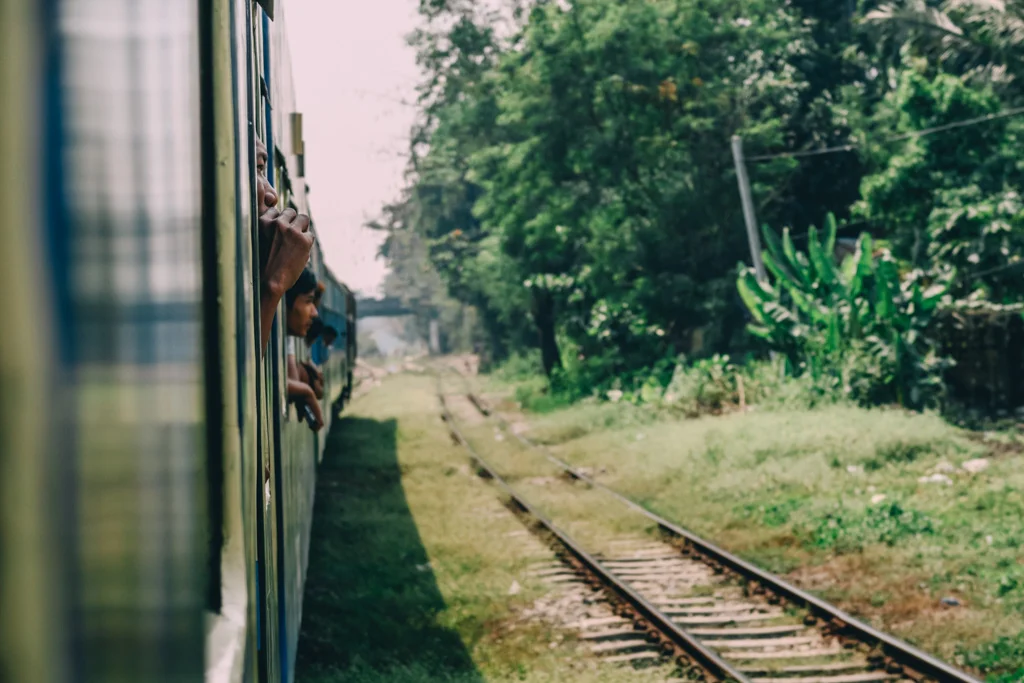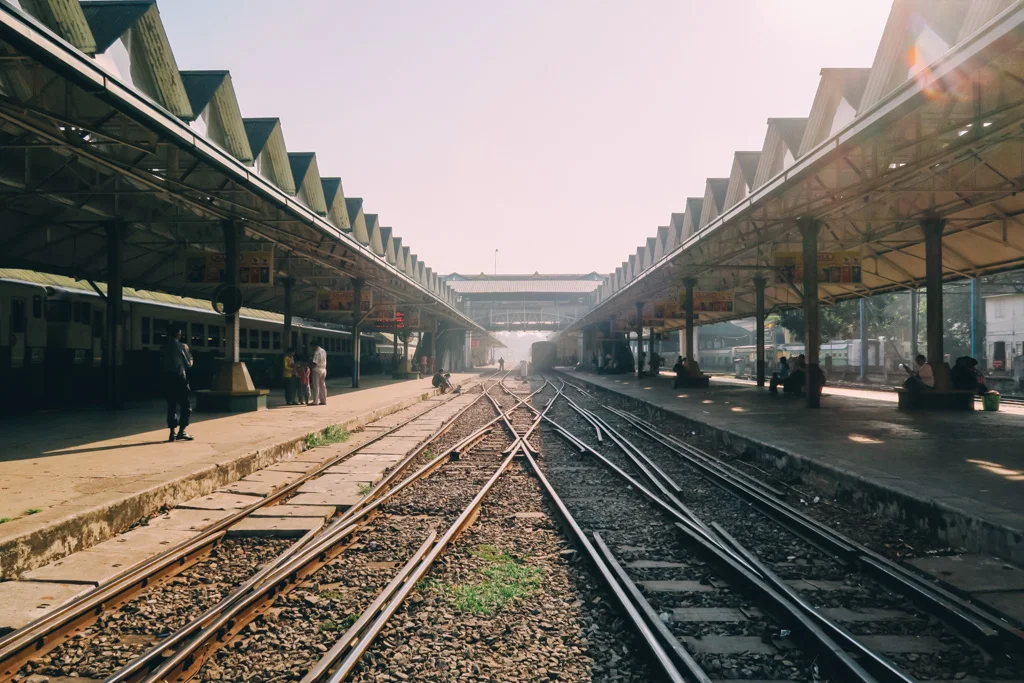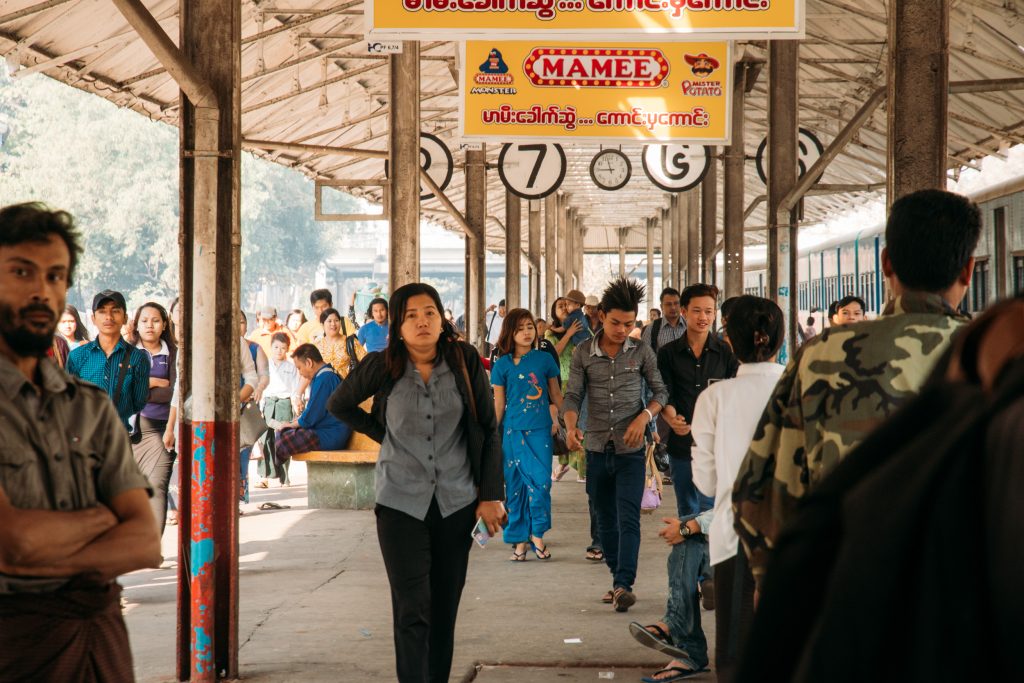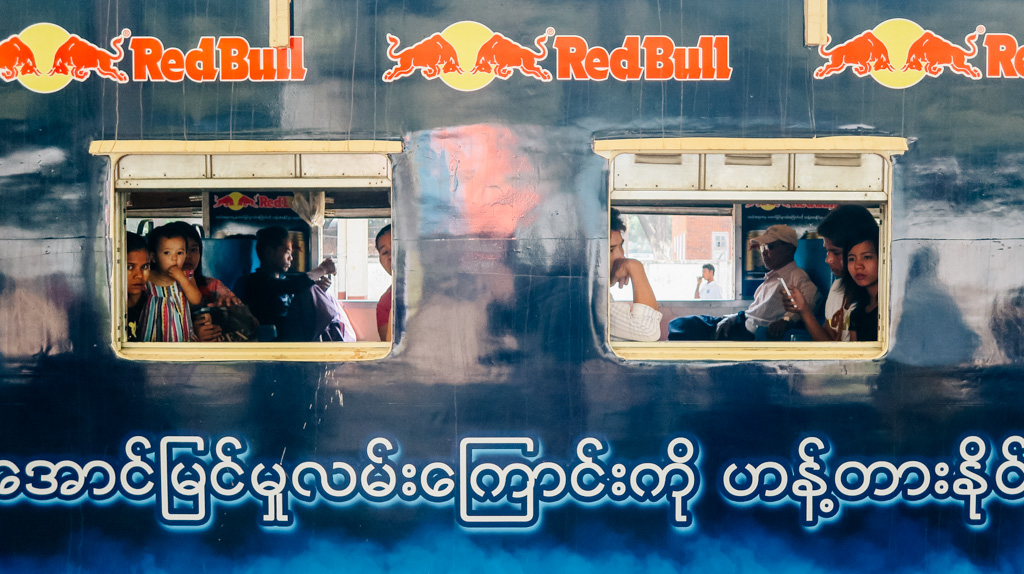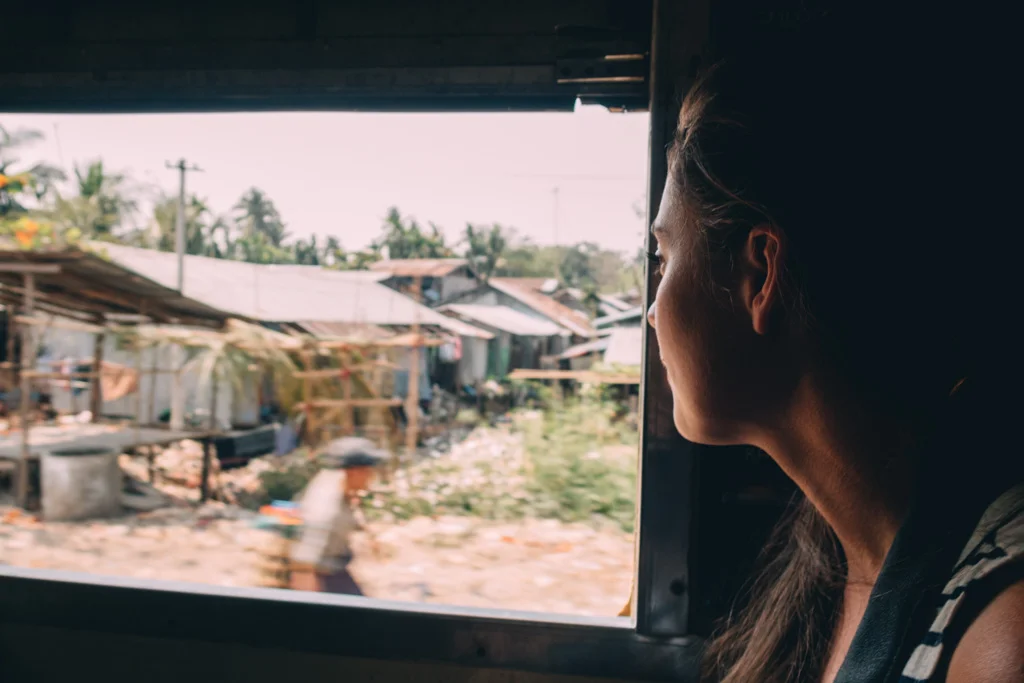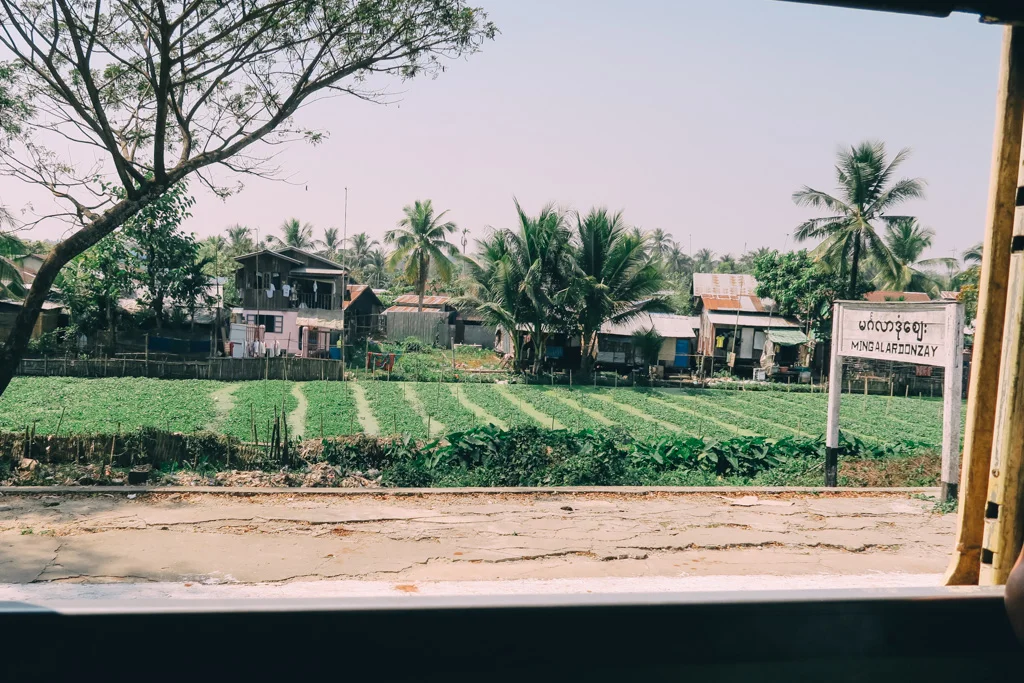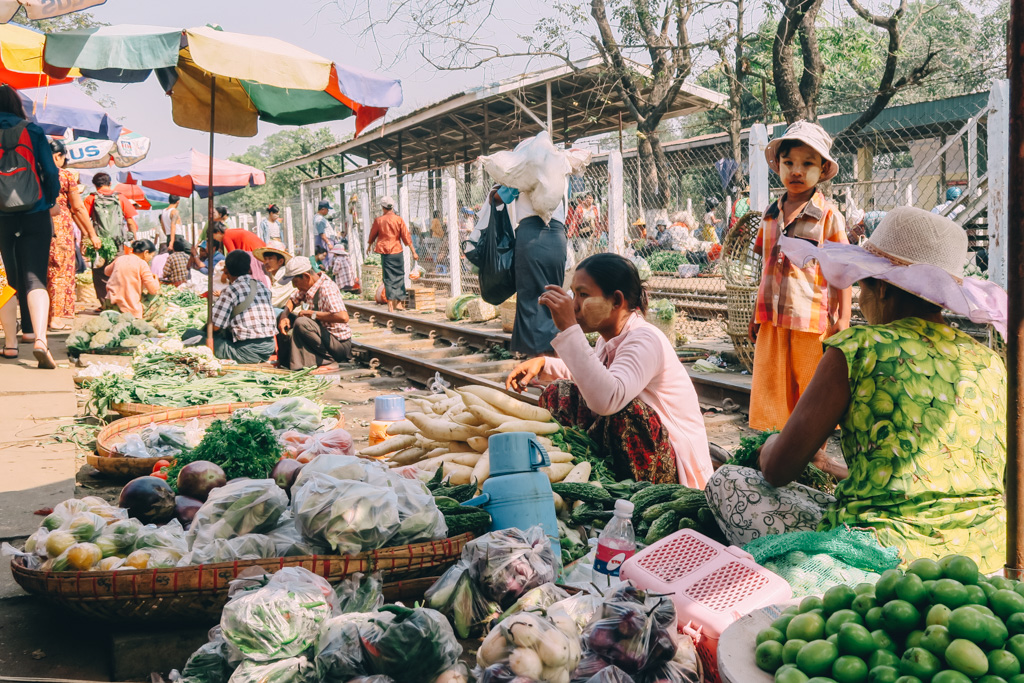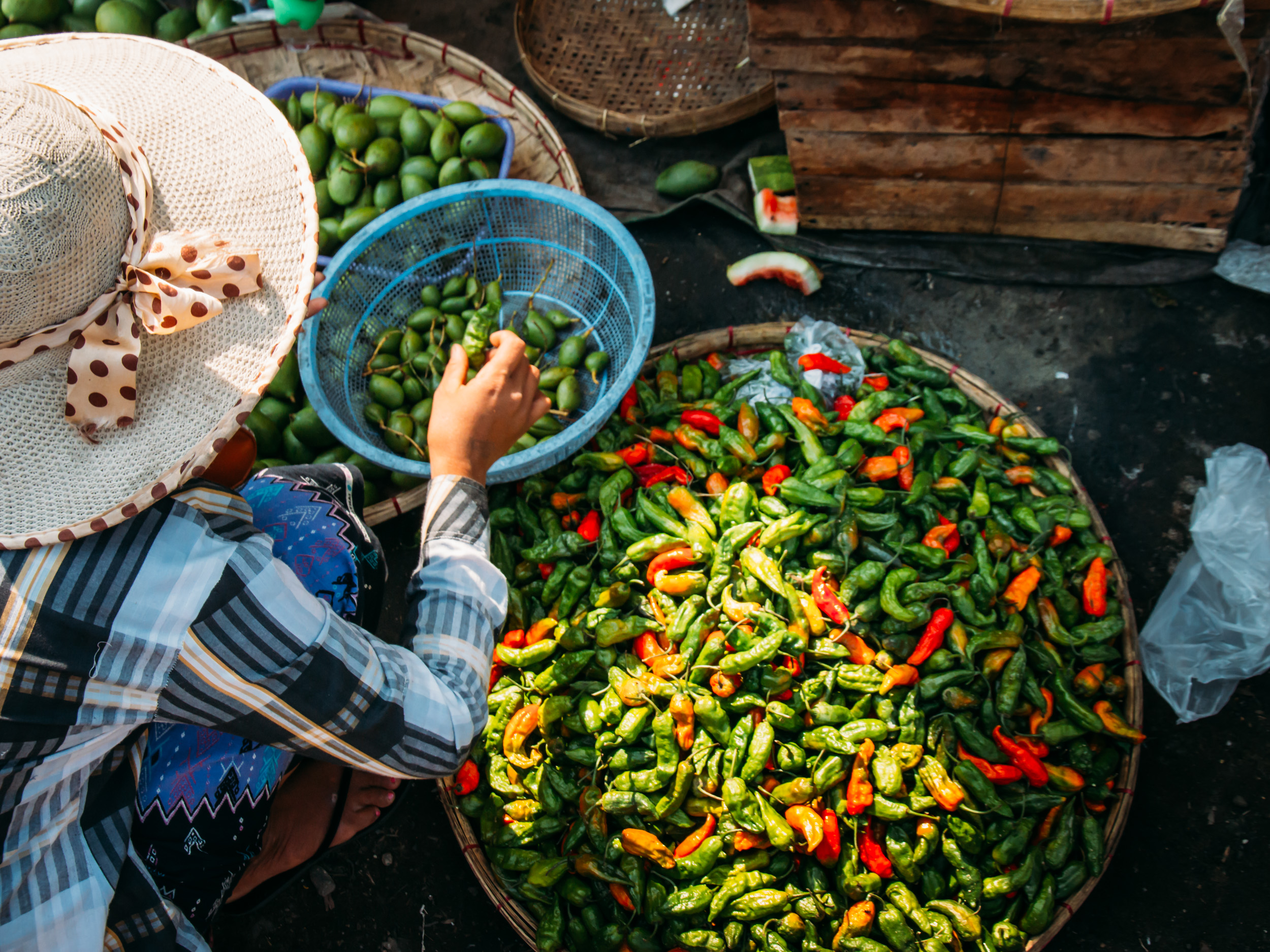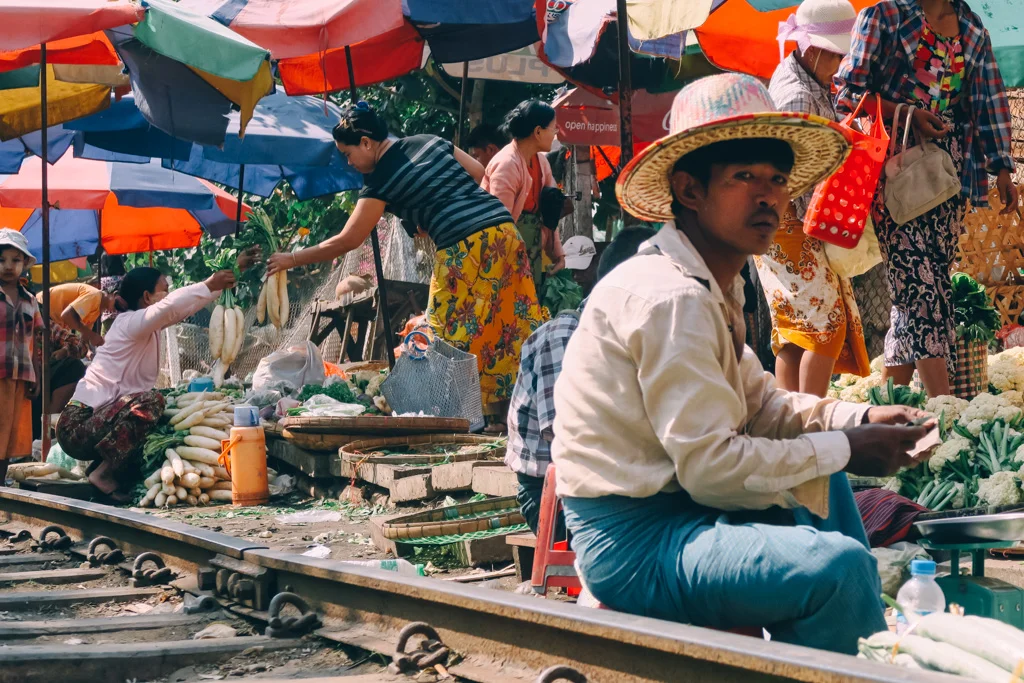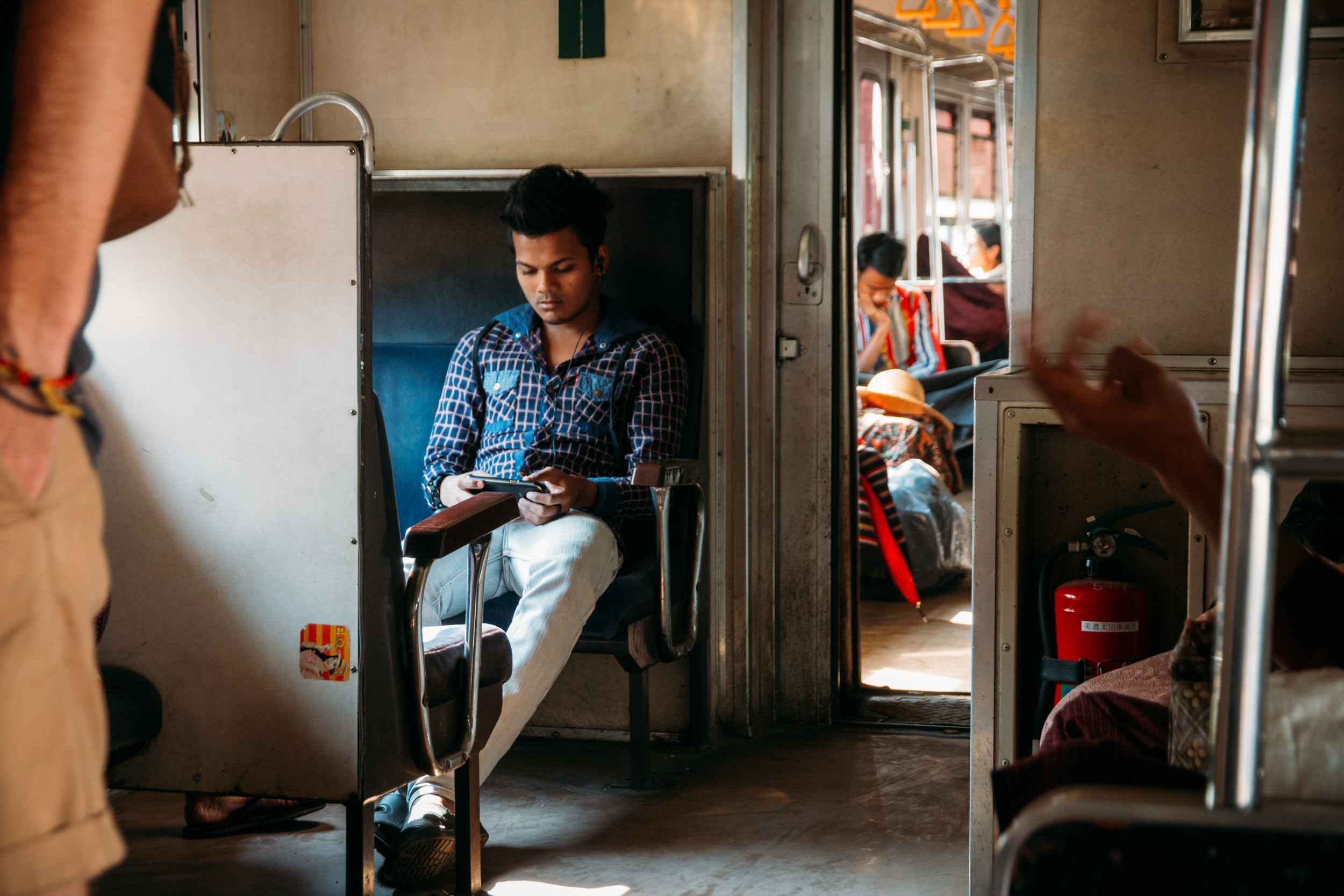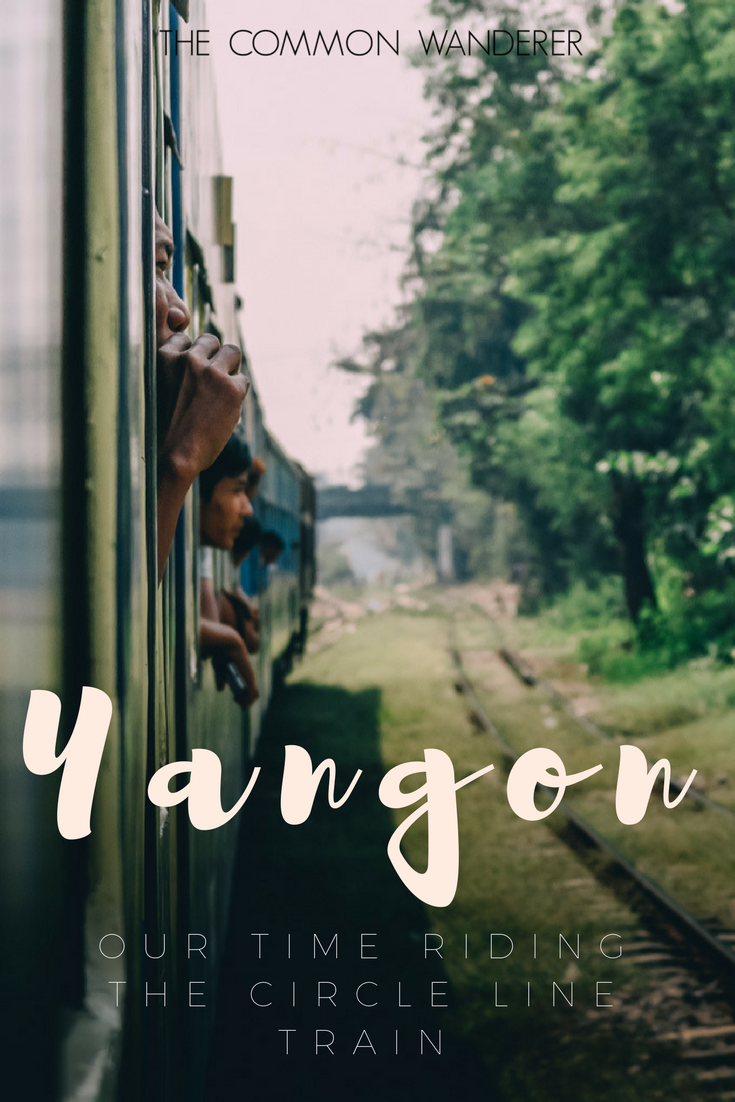On the train again: riding the Yangon Circle Line train in Myanmar
Riding the Yangon circle line train in Myanmar offers a glimpse into traditional Burmese life, while providing a window into its fast-paced future. Jump aboard - and read on till the end for our travel guide too!
‘This is Myanmar [Burma],’ wrote Rudyard Kipling, “and it’s unlike any land you know”.
Like any cliched travel quote, the one above has been thrown about pretty often by writers and journalists, in travel circles, and travellers who struggle to find the words to describe this fascinating land themselves.
The thing is though - as with all good travel quotes - under all the overuse and cliche - there’s actually some truth to it.
When we travelled recently through Myanmar, we were struck by its uniqueness, the warmth of the locals and the way the country retained so much authenticity.
But arriving into Yangon, we weren't sure how long we'd stay. Big city travel isn’t generally our thing, and we didn't want to sour our experiences with the kind of modern chaos and tourist traps that big cities tend to bring.
Plus, perhaps kind of ignorantly, we weren’t really even sure what there was to do once you ticked off the glimmering gold of the Shwedagon Pagoda or Golden rock.
So when the opportunity came up to spend a day exploring Yangon via the colonial-era city loop train and experiencing a slice of local life on Urban Adventures Yangon Circle Line train tour (book your own tour here), we jumped at it.
THE YANGON CIRCLE LINE TRAIN
"HELLO NEW FRIENDS!"
Our beaming guide, Thura, greets us out front of the pick up point, arms wide open and excitedly calling out “hello new friends!”
He’s a bubbly 20-something mechanical engineering student with a passion for exploring Yangon with tourists, and speaking and teaching English. He shakes our hands and introduces us to the rest of our group - his other new friends - before we take off.
It’s like the coming together of two old friendship groups in a new city, and it sets the tone perfectly for the rest of the day.
Right in front of the Central Railway Station we hit a snag in the form of what seems an impossibly busy six-lane main road. Thura grins. Stick with him, he says; he’s done this Yangon traffic thing before.
He waits for a break to appear before stepping out with a hand up and a respectful nod to the drivers, slowing them long enough for us to run across and down the stairs to the station platform. Cross a Yangon road like a local? We got this.
It’s quiet at the station; surprising given between 100-150,000 people will be ferried around the loop today.
Not far from where we wait, a teenage boy listens to pop music on his iPhone’s speaker while a businessman thumbs through Democracy Today - a sign that the times, they really are a-changing here.
-
ALL ABOARD THE YANGON CIRCLE LINE TRAIN
The quiet is shattered when a train screeches into the platform, a swarm of people moving past us and throwing curious glances our way.
Thura shepherds us on board; we only have a few minutes before the old engine springs into action, hauling the bouncing rickety carriages over the 45.9 kilometres of track linking 39 urban, suburban, and rural stations in one big loop.
Carriage rocking from side to side, we wind past the city’s neighbourhoods, through suburbia and shantytowns and into the rural villages where water buffalo still pull carts and plough fields.
Monks wander along the tracks, grubby children play in the fields, and rolling green watercress and rice paddies abound. Inside the carriage, the locals watch us with bemused expressions, probably wondering what we make of it all.
They break into huge grins when we smile at them.
-
THE SIGHTS AND SMELLS OF MARKET LIFE IN YANGON
Life in Myanmar is still difficult for many and poverty is rife.
Far cheaper than bus fares, the train is the transport of choice for many locals taking their wares to market. Every now and then, the train slows just enough to allow passengers to scramble on and off.
Vendors swing wicker baskets full of fresh produce on board and mount the stairs with dexterity, balancing trays precariously upon their heads.
Soon, each carriage is transformed into a noisy moving marketplace; Papaya salads, fresh fruit, the day’s paper, cigarettes and Betel quids at our fingertips.
At Da Nyin Gone station the wholesale market spills onto the platform in a flurry of activity; traders hustle at train doorways; vendors dash to stalls with arms full of produce; Thanaka-painted children dart between legs; and beggars wave metal cups and wait for the jangle of incoming Kyat.
Everyone listens for the signal of an oncoming train, collecting their goods and joining the stampede to safety when the announcement comes.
Following Thura into the market’s narrow, dark laneways it’s not long before the smell of fermenting Shrimp paste assaults our noses. He laughs at our screwed up faces and explains that it’s used in the majority of dishes in Myanmar so most people here love it. We’ll take his word for it.
The stall owners here are incredibly friendly, flashing smiles and calling Mingalaba (hello) as we pass.
We stop occasionally to buy an ear of corn, bags of sweet watermelon or fresh pineapple. Our limited Burmese fails us, but it turns out that thumbs ups are universal and we manage to communicate how tasty everything is with a series of gestures and big grins which are returned to us ten-fold.
-
KFC? IN MYANMAR? | THE YANGON CIRCLE LINE TRAIN
Heading back towards the city (and our next stops on the tour!), we gaze out the window in contemplation at the totally unique cross-section of life laid out before us.
A trip on the city circle is much like taking a journey straight back into Myanmar's past, and yet we realised that while the train lazily crawls around the track each day, the rate of development in Yangon is skyrocketing.
There are signs of rapid change everywhere - a three-level KFC rising next to a Hindu Temple, iPhones in every hand.
As the sprawling city comes back into view, we can’t help but wonder whether the vibrant, simple existence that floats alongside the tracks will last in its current state - or will it give way to high rises, overpasses, and highspeed MRTs?
How long this life beside the rails will remain unlike any you know is anyone’s guess really, but we’re glad we took the time to explore it while it does, just like a local.
-
YANGON CIRCULAR RAILWAY | YOUR ULTIMATE GUIDE
-
-
BOOK YOUR OWN YANGON CIRCLE LINE TOUR
We travelled on the Yangon Circle Line train with Urban Adventures, and highly recommend taking this tour to get the most out of the experience. You’ll have a local guide who can point out the best stops along the way, and who knows the Da Nyin Gone market like the back of their hand too!
BOOK | Yangon Circle Line tour
-
ABOUT THE YANGON CIRCLE LINE
The 45.9km, 39-station loop of the Yangon Circular Railway was built by the British during colonial times (in 1954).
The total loop takes about 3 hours to fully complete, and given that it stops every kilometre or two and is the most affordable method of transport in Myanmar, is heavily-used by lower-income passengers who use it to navigate the areas around Yangon or ferry their wares to market.
In fact, the rail line operates at a loss for the government in a deliberate move to keep prices low for the estimated 150,000 locals who use it daily.
-
WHAT TO EXPECT ON THE YANGON CIRCULAR LINE
If you’re seeking comfort and luxury on the Yangon Circular Railway, this is definitely not the place for you.
Some of the trains used on the Yangon Circle Line were imported from Hungary in the ‘60s, others from Japan in the early 21st century. But regardless of where or which century the trains arrived from, one thing’s for sure: they’re old, rundown, and without many comforts.
That said, the character of the train line is a huge part of its charm, and people watching in the carriages was fascinating to both of us.
-
COST OF RIDING THE YANGON CIRCULAR LINE
Tickets for the Yangon City Circle Line are purchased on the station platform, and will set you back 200 Kyat per ticket. Hang onto your ticket for the entire journey until you get back to Yangon!
-
WHERE TO STAY IN YANGON
HOTEL
15th Street @ Downtown Yangon | Comfortable rooms, breakfast included, centrally located and super friendly staff. Rooms start from £19
HOSTEL
HOOD Hostel | Located in the heart of Yangon, HOOD Hostel is refurbished from an old colonial building. It’s also a social enterprise offering vocational training for local youth; your stay directly funds their education.
BOOK | HOOD Hostel
-
TOURS OF MYANMAR
If you’re keen to explore Myanmar but would prefer to have someone else do all the organising for you, we recommend the following G Adventures tours (our fave small-group travel brand!) to see the very best of this incredible country:
CLASSIC MYANMAR
14-Day Yangon to Yangon small group tour with G Adventures takes in the major sights of Yangon, Inle Lake, Mandalay, Bagan, Kalaw.
BOOK | Classic Myanmar tour with G Adventures
MYANMAR: HILLTRIBES AND SUNSETS
This 14-day tour from Chiang Mai to Bangkok is perfect for those looking for some offbeat places to visit in Myanmar, along with some of the more famous highlights It includes hikes to hill tribe communities in the Kengtung area, plus visits to Inle Lake, Mandalay, Yangon and Bagan.
BOOK | Myanmar Hilltribes and Sunsets
MYANMAR ISLANDS: SNORKELLING & VILLAGE HIKES
This 11-day tour takes in the best beaches and epic hiking opportunities in Myanmar, including island hopping (and kayaking) around the Mergui Archipelago, visits to a community based ecotourism project in Dawei, and lush jungle-clad limestone karsts of the Tanintharyi Mountains.
Have you visited Myanmar's capital?! Jumped aboard the Yangon Circle Line train? Share your thoughts with us in the comments below!
Experience what life is like on the Yangon Circle Line train; book your Yangon by Rail tour with Urban Adventures.
LOVE IT? PIN IT!
YOU MIGHT ALSO LIKE THESE MYANMAR POSTS...
We were invited to tour Yangon with Urban Adventures, and this post originally appeared on their blog. As always, all opinions expressed are our own.

